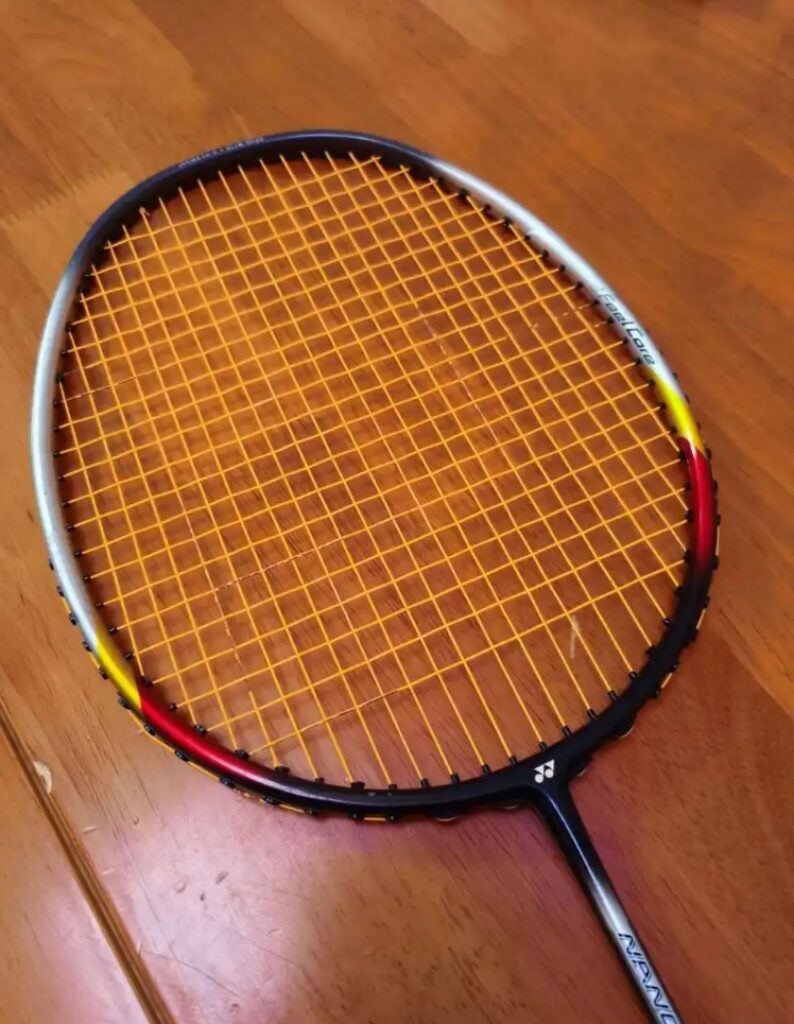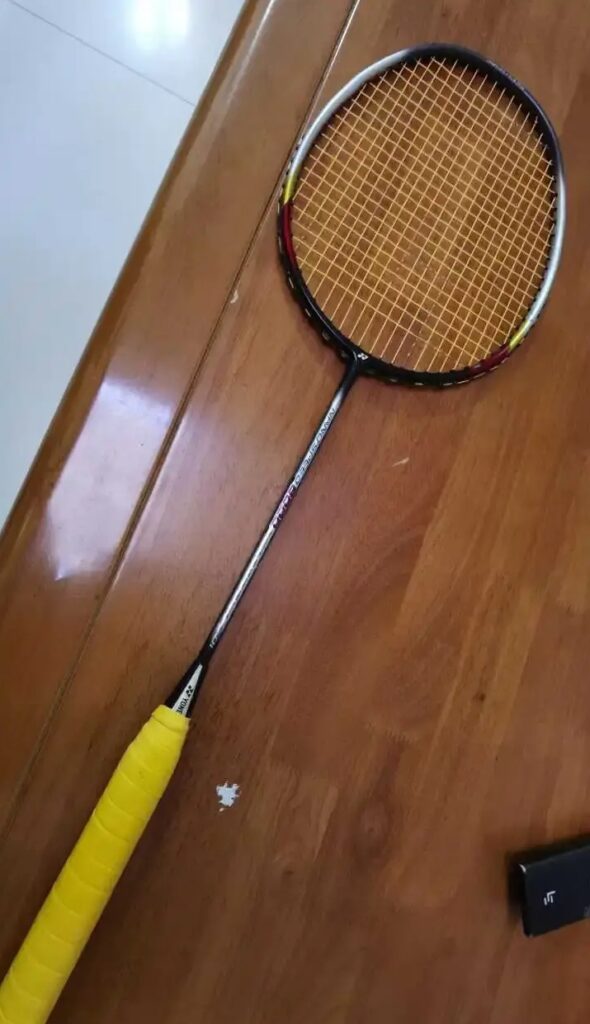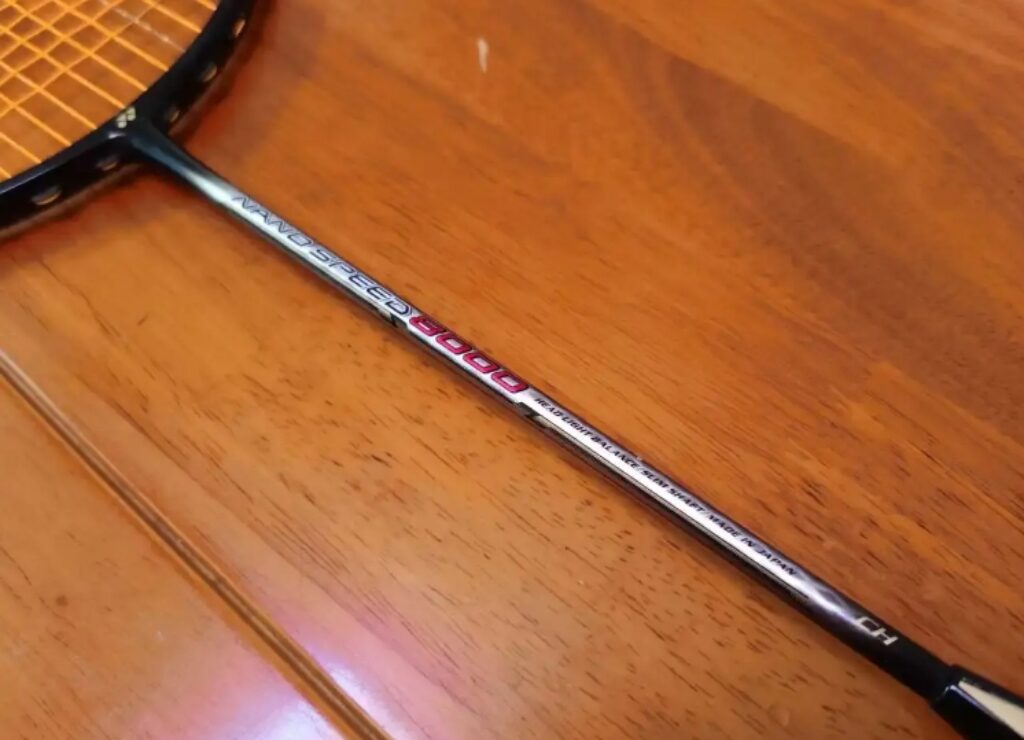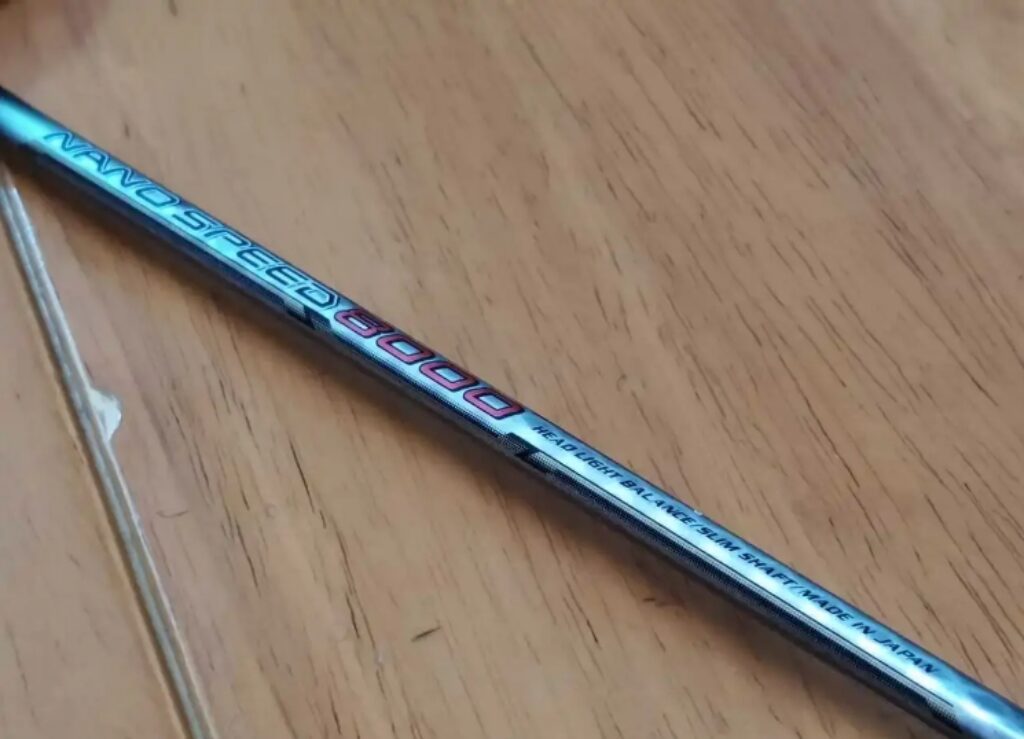Emotionally, I don’t enjoy playing with discontinued or repaired rackets. However, there are always those gems that, despite enduring the ravages of time, still shine brightly and catch my eye.
The 17-year-old NS8000 is one such racket. I encountered it during a casual game with friends, and its restored condition made me appreciate it even more.

Specifications:
- Weight: 3UG5, without grip tape, single-layer overgrip
- Total Weight: Unknown
- Shaft Length: 210mm
- Stiffness: Officially rated as extra stiff, but slightly less in practice
- Frame: Aero box frame with fluid head transitions
- Stringing: 9–3 o’clock grooves, 27-28 lbs tension, strung with Aoshiwei 66 Fire Power
- Warranty: 24 lbs
Given its age, it carries a distinctly old-school aesthetic. The racket head features black wings with silver, yellow, and maroon accents, returning to black at the T-joint. The angular design of the cone cap also reveals its age. Compared to other rackets of the same era, like the NS9900/9000 and various limited-edition or remakes, the NS8000’s finish is much more subdued. My friend’s racket had some repairs at the 3/9 o’clock positions, and you can still see the traces in the paintwork.

Thanks to the restorer’s skills and the fortunate symmetry of the damage, the racket’s balance remained intact, with no noticeable issues when handling it. From today’s perspective, the aerodynamic design is quite conservative. As a speed-oriented doubles racket, the NS8000 only has a basic fluid frame and thin wing design on the head to reduce wind resistance. However, in 2005, materials weren’t as advanced as they are today, so it wasn’t feasible to use less material while maintaining enough strength to enhance swing speed. Despite all the rackets I’ve tried, the NS8000 still feels solid as a balanced 3U racket.
This definitely isn’t an easy racket to wield, and it remains so even today. While the higher weight of 3U or even 2U versions might give shots more momentum, the stiff shaft and relatively head-light balance demand more effort from the player. For advanced players, the NS8000’s performance in clears is decent, but for those with underdeveloped swing techniques, it may feel like they’re exerting effort without achieving enough height or distance. Personally, I find the racket’s elasticity to still be quite sufficient, though the feedback does feel a bit stiff—but not in a way that significantly impacts performance.

In doubles, where speed is crucial, there are two paths to increasing swing speed: reducing wind resistance or lightening the head. The NS8000’s design leans on the latter, which makes it a perfect weapon for flat drives. Shots come off quickly, and the racket is stiff enough to maintain good overall coherence when swinging. Despite being a 3U racket, it feels very nimble, allowing for aggressive play in fast-paced exchanges, where quick wrist movements and good racket positioning can really shine.
However, due to my lack of finesse at the net, I haven’t fully experienced the NS8000’s control potential. In its current setup, it feels a bit average for precise net play. When I can catch the shuttle high at the net, quick taps and pushes suit the racket’s character better than delicate control shots.

Though it’s an old doubles racket from 2005, its attacking power still impresses me. First, the direct feel throughout the test phase made the racket a joy to use, even with the slight stiffness. Second, the excellent torsional resistance ensured that shots were precise, landing where I intended. Third, the shaft’s elasticity still supports powerful smashes, and the aerodynamic design allows for a smooth downward stroke. Finally, its balanced setup allows for seamless play, particularly in situations where I need to take the initiative, pressuring the opponent with rear-court smashes to create scoring opportunities. The NS8000 can even handle front-court duties, holding its own as the front player in doubles.
In defense, the NS8000 benefits from a large face and sweet spot, offering good forgiveness. However, just getting the shuttle back isn’t enough to win a rally. Under continuous attack, the stiff shaft demands quick reactions and effective power generation to escape difficult situations.

While I view the NS8000 through the lens of its era and praise its resurgence after being restored, looking back at my own description, it’s fair to say that it’s essentially a “powered-up” NS9000. After all, times have changed.

Leave a Reply